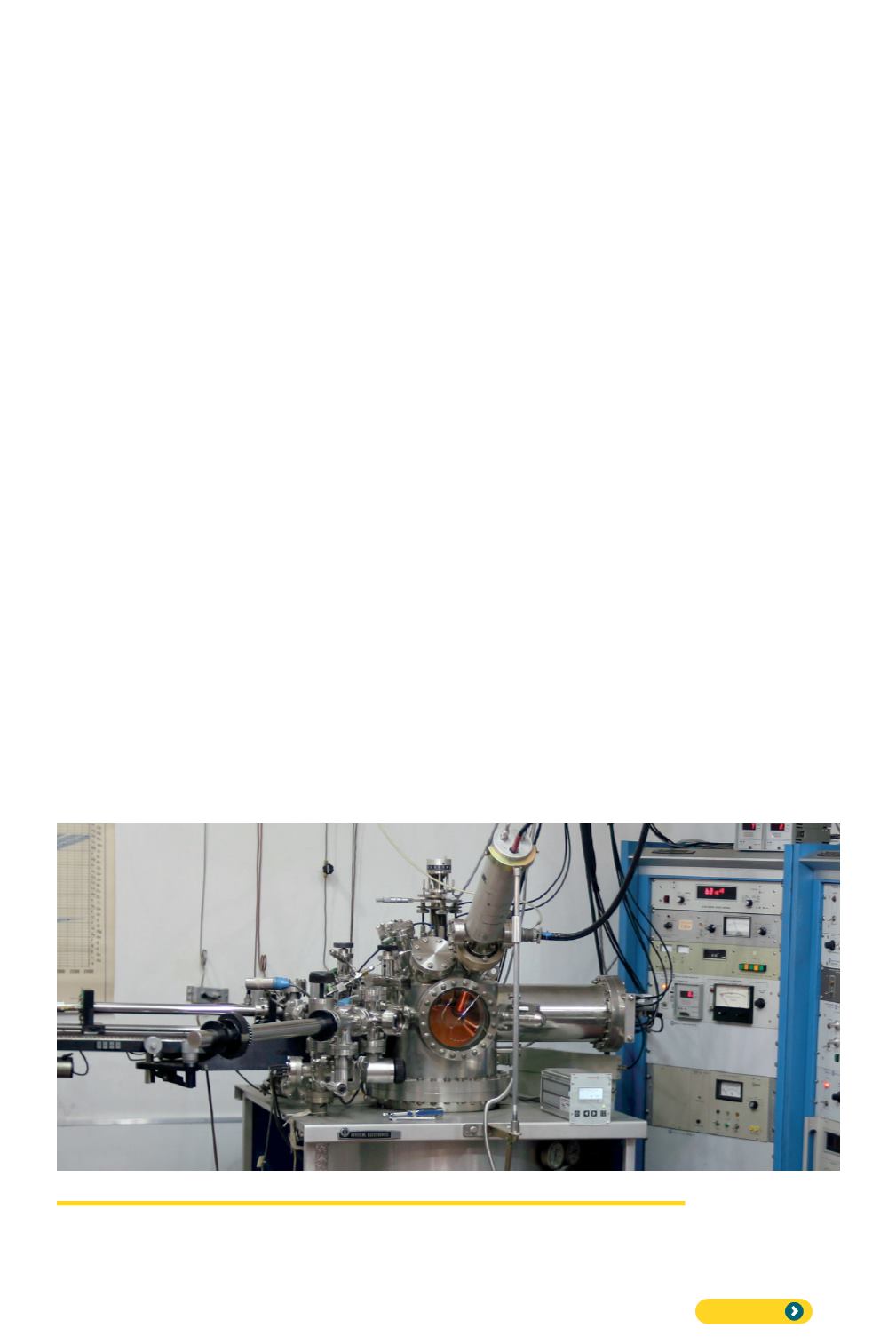

87
motivating students and young researchers to
study and excel in knowledge. It also offers prizes
for the best PhD Thesis and nominates hono-
rary members.
The AFA has a board committee consisting of
representatives from the eight regional seats who
are elected for two years by direct voting.
The origins of vacuum science in Argentina are
related to several research groups in physics,
materials science and chemical engineering.
At the INIFTA Institute in La Plata the group of
Prof. Heras developed a homemade Auger
spectroscopy system. The group of Prof. Roman
Buitrago at INTEC in Santa Fe started XPS,
SIMS and Auger spectroscopy studies applied
to thin films. The group of Prof. Raul Careta at
PLAPIQUI (in Bahía Blanca) applied XPS and
Auger spectroscopy to heterogeneous catalysts.
Prof. Zgrablich made important contributions
to vacuum sciences both theoretically and
experimentally at INFAP, San Luis, applying XPS,
AES, and TPD studies to porous media and
heterogeneous catalysis. It must be mentioned
the role of the Instituto Balseiro (IB) and the
Bariloche Atomic Center, National Atomic Energy
Commission (CAB-CNEA) for the impulse in the
development of physical sciences. Being a well-
known Center at international level, it has XPS,
AUGER, LEED and different vacuum lines related
to nuclear and atomic collision equipment.
In the last 15 years, numerous equipements using
vacuum technologies were acquired by different
research groups all over the country with diffe-
rent aims. Although a complete list is not
available, we can mention several examples.
Promoted by the Institute of Nanoscience and
Nanotechnology, (CNEA), the Nanoscience And
Nanotechnology Laboratory at Bariloche Atomic
Center (CAB) was inaugurated in April 2012.
It is a group of class 10,000 cleanrooms that
integrates different activities such as growth
of films and super-networks by sputtering,
electronic lithography and UV optics, nano-manipulation, chemical attack processes in
liquid phase and reagents in plasma phase,
and nanoparticle growth. In total, there are
240 square meters of clean installation. In this
sector researchers from different groups of the
Bariloche Atomic Center work in areas, such
as Low Temperatures, Magnetic Resonances
and Characterization of Materials, among
others. It can also be mentioned that several
groups in Argentina perform experiments using
high vacuum equipment and beam lines at the
Campinas Synchrotron (Brazil). Other facilities
related to vacuum sciences are located at
INQUIMAE, Buenos Aires and at Y-TEC, Berisso,
our technology and innovation enterprise related
to our national oil company (YPF).
Several members of AFA have plans to start a
new division to deal with all vacuum sciences
related research and technology matters. For
further information contact Dr. Miguel Sanchez
from IFISUR (UNS-CONICET-Bahia Blanca) at
msanchez@uns.edu.ar.
FESCA/AUGER PHI 548 Spectrometer. One of the first commercial systems purchased in Argentina in the 80’s,
it is installed at the Chemical Engineering Pilot Plant Institute (Consejo Nacional de Investigaciones Científicas
yTécnicas and Universidad Nacional del Sur).The equipment is currently operational.
SUMMARY









